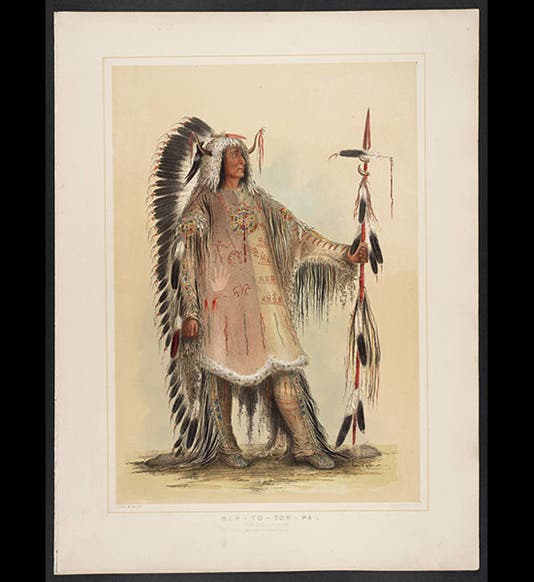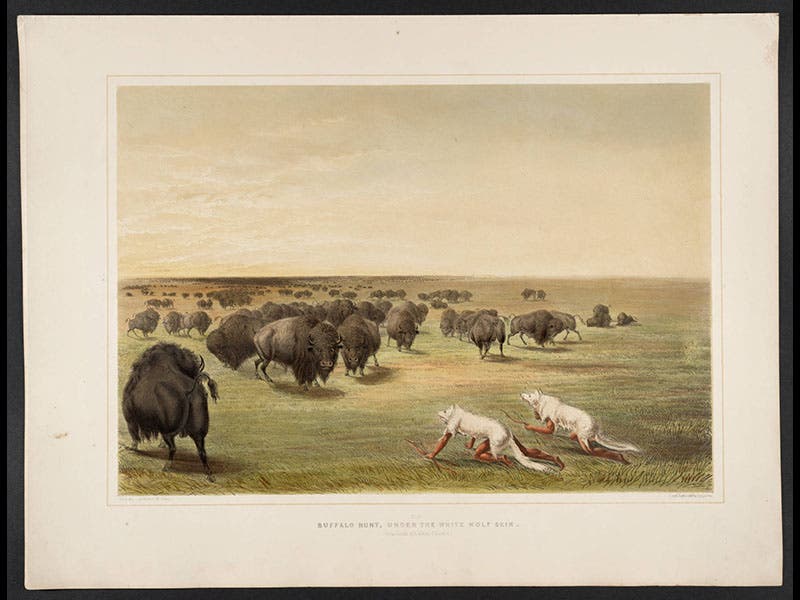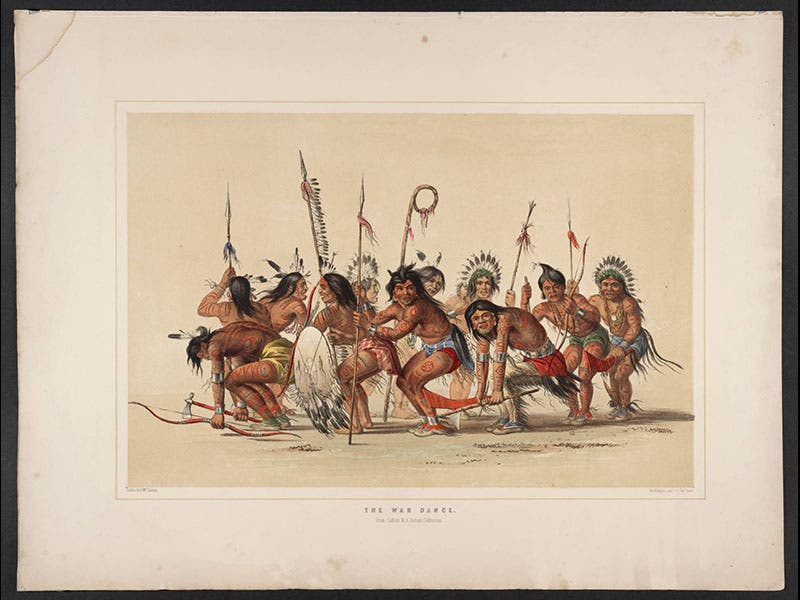Scientist of the Day - George Catlin
George Catlin, an American artist, died Dec. 23, 1872, at the age of 76. In 1830, Catlin set out from Philadelphia for the Great Plains, where his goal was to capture Native American culture in paintings before it vanished forever beneath the press of frontier expansion. He spent eight years travelling up the Missouri River, before returning east with over 500 paintings of forty-eight different tribes. He called this collection his "Indian Gallery," and he went on tour for several years, trying to convince the government to buy the collection. He was unpersuasive, and in 1852, Catlin went bankrupt, and he had to give up his Gallery as collateral to a businessman, Joseph Harrison, who then paid his debts. After Catlin died, Harrison gave the collection to the Smithsonian Institution, where it resides today.
In 1844, Catlin had published a small selection of his paintings as prints, in what he called the North American Indian Portfolio. We have this portfolio in the History of Science Collection, and for our Science Goes West exhibition in 2004, all thirty-one plates were displayed, mounted on the walls of the old exhibit room. They provided a very dramatic "surround" for the other books on display. Five of these can be seen above. At the time of our exhibit, many of the original Catlin oils were at the nearby Nelson Gallery, as part of a national tour. You can see a selection of these at a Smithsonian virtual exhibition. The portrait of Catlin (sixth image) is also at the Smithsonian, in the National Portrait Gallery
Dr. William B. Ashworth, Jr., Consultant for the History of Science, Linda Hall Library and Associate Professor, Department of History, University of Missouri-Kansas City. Comments or corrections are welcome; please direct to ashworthw@umkc.edu.












